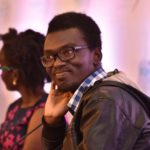The first time I heard the name Wamba Dia Wamba, was in the late 1990s, early 2000s. It was mostly on radio. The first time I read the name Wamba Dia Wamba was in the same period. I read it in Ugandan newspapers. Without telling on my own age (yes, I heard that people in their 30s are now the old ones, so we must be shy about our age – Shem), I was just becoming a teenager.
Wamba Dia Wamba was a leader of a rebel group, the Rally for Congolese Democracy (RCD) at the time. This was the context in which I heard his name. The Second Congo War was raging, and although I was young, I considered myself a rookie on matters current affairs and politics. I enjoyed following such events. And please admit it, the poetry of the name, Wamba Dia Wamba on its own left an impression.
***
Much later in life, I would read about this war, mostly in trying to understand Museveni’s “foreign policy”. Let’s say that this was the second time I read about Wamba Dia Wamba. I would learn that the group Wamba Dia Wamba led, was initially supported by Uganda in the war to remove Laurent Kabila from power. Part of the disagreement between Uganda and Rwanda led to the splitting of the RCD, the latter supporting the RCD – Goma faction and the former supporting the RCD-Kisangani faction. Wamba was the leader of the Kisangani faction.
Eventually, Museveni pulled the rug beneath Wamba’s feet, as he desired that RCD-Kisangani work with Pierre Bemba’s Movement for the Liberation of the Congo (MLC). Wamba could not have the suggestion. He lambasted it as “an unwelcome foreign imposition.” By this point, RCD-Kisangani had further split and Wamba was based in Bunia.
Wamba’s troubles in leading a rebel group could be said to have resulted from a purist and honest commitment to democracy and transparency. The disagreements with RCD – Goma were mostly on the purpose of the war, what liberation of Congo meant. For Wamba and his faction, liberation went beyond replacing Kabila, which was understood as RCD-Goma’s aim. Wamba’s faction was fighting for more than replacing Kabila. In an interview, published in Transition Magazine in 2000, Wamba, on internal criticism of his methods said:
“Figuring out how to link administration to political values while you are still in the bush is a very serious matter. Recently, the other faction of the RCD accused me of trying to introduce democracy into the movement. Imagine that! “Democracy will come later,” they said.”
***
Wamba Dia Wamba became a guerrilla, a rebel when he was in his 50s. He had been an intellectual, an activist, teaching at various universities, but more prominently at the University of Dar Es Salaam from the 1980s, through the 1990s. I learnt of Wamba, the intellectual giant, the third time I read about him. This third time, though, I was reading directly from him.
In 2014, I wrote an open letter to a type of African Intellectuals, asking that they center the ordinary African in their thinking. You can’t believe it. I couldn’t believe it. Wamba wrote to me. Wamba engaged me. I was a nobody, a 20 something-year-old with access to the internet, mouthing / fingering off opinion. But Wamba took me seriously enough to engage me.
Wamba, the intellectual was humble and graceful, he uplifted us. On these very streets, this very Facebook, Wamba commented on posts, participated in debates, taught, watched, and learned indeed from the social media masses. He was one of those who followed up our #FreeStellaNyanzi campaigns closely.
***
The fourth time I read about Wamba Dia Wamba, I had just enrolled for a PhD at Cornell University. The story starts with Wamba’s son, Phillipe (RIP). My advisor, Prof. Mukoma Wa Ngugi was recommending books I should read about the relationship between Africans and African Americans when his mood changed, on mentioning Kinship: A Family’s Journey in Africa and America.
Phillipe Wamba’s memoir came out in 1999, and known personally to Mukoma, he was a voice of a resurgent Pan-Africanism at the turn of the century. The sadness in Mukoma’s voice, while he told me about the tragic accident that claimed Phillipe’s life in 2002 stayed with me. Phillipe was 31 when he died.
Kinship is a story of the Wamba family. Dia Wamba, the patriarch went to the US to study. He found love in Black America, and married Elaine Brown. The family lived in the US for a while, as Wamba Sr. taught at some American universities and colleges. Then, they moved to Dar es Salaam in the 1980s. At this point in time, Dar was a hub of radical Black Left thinking, if you like. There were many famous and some not so famous intellectuals, activists, and rebels working for freedom living in Dar at the time.
Phillipe returned to the US to study, and work. The memoir explores brilliantly the nature of solidarity between Africans and African-Americans, by someone who was both. Phillipe was Congolese despite being raised in exile (Wamba Sr. was a noted anti-Mobutu activist, once jailed for possessing subversive material – being a copy of his own academic work), and African American. Kinship introduced me to Wamba Sr’s activism, family life, roots and Blackness.
***
I am sorry to say, that the fifth time in my ever continuing learning/hearing/reading from/about Wamba Dia Wamba was July 15, 2020 when social media broke the news that he had transitioned. I want to hear and read more about Wamba Dia Wamba. There is not enough one can know and hear and read and learn about Wamba Dia Wamba. A Pan Africanist. A revolutionary. A guerrilla intellectual. An icon of the Black Left.
May his Soul Rest In Peace.
This post was created with our nice and easy submission form. Create your post!






